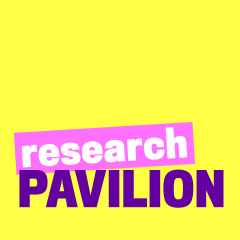“Too tidy!” is the first thought that springs to mind on arrival in Tero Nauha’s workroom at the Helsinki Collegium for Advanced Studies. The acclaimed performance artist is in scholar mode today. We find him seated at his computer typing up a paper with a calm demeanour befitting a postdoctoral fellow. In this dignified context it’s hard to picture him writhing in a pile of dirt and ping-pong balls as he did in his performance Life in Bytom (2012).
The bookshelves are neatly lined with tomes by François Laruelle, Deleuze and Guattari, yet there is little else to suggest that some of Finland’s most thought-provoking performances are cooked up in this unlikely grey workspace.
Except one curious detail: in the corner stands a contraption called the theremin, a musical instrument invented in 1919 by a Russian named Leon Theremin. Readers will recognise its otherworldly sound from the eerie soundtracks of 1950s sci-fi flicks such as The Thing from Another World.
The theremin appeals to Nauha because of one peculiarity: it is the only musical instrument that is played without any physical contact. Its uncanny, comic sound is produced by gesturing in the air, one hand controlling pitch, the other dynamics.
BODY, FIELD, MATTER
Nauha rises from his desk and approaches this notoriously difficult-to-master instrument. He is rehearsing for his forthcoming performance at the Research Pavilion in Venice, in which the theremin will take centre stage.
The performance will also feature another instrument, a record turntable on which Nauha will play recordings of his own voice reciting lectures. While playing the monologue, Nauha will create scratch and stutter effects, as if the artist were taking an ironic dig at his pontificating scholarly alter-ego.
“I will engage in a dialogue with myself, which might sound a bit narcissistic!” he adds with a laugh. “But there’s another message, too. My voice is preserved on the record as an archive, but the sound exists only in the moment it’s played. With the theremin, in turn, you create sound purely by movement, by altering the body’s electromagnetic field. Both instruments express something about the body: one as matter, the other as field,” the artist elaborates.
“I’ve recently spent so much time reading theory that I’m starting to think more about the body, which occupies the domain of the Real and is indifferent to theory.”
WEARING TWO HATS
Nauha’s forthcoming performance seems like a direct commentary on his dualistic professional identity. Rather than separating his two selves, however, Nauha welcomes the potential for creative cross-pollination.
“I feel no need to box myself in. Playing two roles is pleasurable. It has never been a problem for me – perhaps more so for other artists, who tend to pigeonhole me as an ‘academic’.”
Over the past two years Nauha has spent more time at his computer than on stage. Last year he joined the Collegium – an independent postdoctoral research institute within the University of Helsinki – after completing his doctoral thesis, a critical investigation of the relationship between artistic work and capitalism.
He is currently a member of a four-year research project funded by the Academy of Finland, How to Do Things with Performance in Performing Arts Research Centre, Theatre Academy. The project’s four members will take part in lectures, workshops, screenings and performances at the Research Pavilion in Venice on May 17 and 18.
“The event is perfect for me. I get to be an academic in the morning and then turn into an artist in the afternoon!”
POS T-TRUTH POETICS
T-TRUTH POETICS
Perhaps one reason why Nauha flits so effortlessly between the artworld and academia is his refusal to accept that complete answers can be found on either side of the theory-practice divide.
Nauha first became involved in academic research through his involvement with a group of artists and theorists calling themselves General Intellect, who applied Italian Operaismo (Workerism) in a Finnish context.
“Through cognitive capitalism, I gradually started moving away from the hermetic position of asking What am I doing as a performer? to formulating questions such as ‘Where are artists located and how are they linked to other forms of labour?” says Nauha.
“At the moment, however, Laruelle is my biggest influence. I’m into philo-fiction and performative fictions. Fictional poetics has emerged as a good form of resistance in this era of post-truth.”
Nauha’s recent deep-dive into theory has armed him with a refreshingly non-theoretical stance on art-making: “Both in my research and artistic practice, my focus is on the relationship between thought and performance. My latest position is that art and philosophy are equally valid modes of inquiry.”
Or, with Nauha serving as a walking example, the two can ideally feed off each other.
Tero Nauha
- Born in Hyvinkää, Finland in 1970
- Finnish performance artist based in Helsinki
- Doctor of Arts, Uniarts Helsinki’s Theatre Academy (Theatre and Drama),
- Postdoctoral Fellow in the Arts, Helsinki Collegium for Advanced Studies
- Research interests: artistic research, schizoanalysis,
speculative materialism - howtodothingswithperformance.wordpress.com
This article has originally been published in the May issue of Uniarts Helsinki's IssueX magazine, this time a special edition dedicated to the Research Pavilion.
